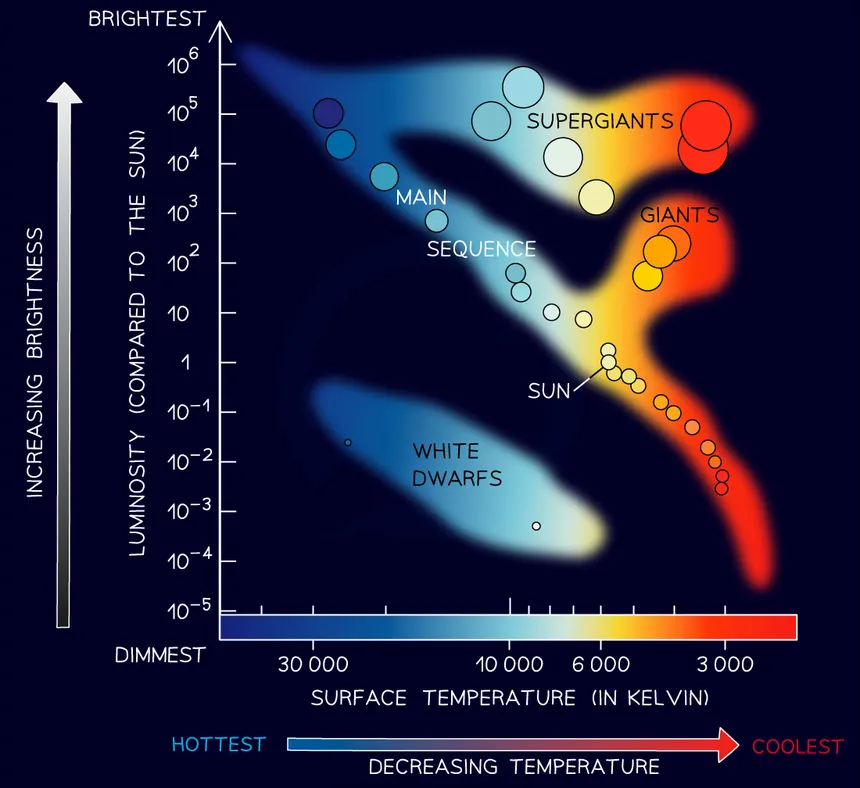(c) stellar evolution
1/4
Earn XP
Description and Tags
Name | Mastery | Learn | Test | Matching | Spaced |
|---|
No study sessions yet.
5 Terms
how can stars be classified according to their colour (8.7 / 8.8)
o - ~ 30,000K, hottest (blue)
b - ~ 20,000K
a - ~ 10,000K
f - ~ 7,000K
g - ~ 6,000K
k - ~ 4,000K
m - ~ 3,000K, coolest (red)
mnemonic: oh be a fine girl kiss me
describe the evolution of stars of similar mass to the sun (8.9)
nebula: stars form from large clouds of dust and gas particles (nebulae) that are drawn together by gravitational forces over millions of years. as the particles get closer the temperature and pressure becomes so large that nuclear fusion of hydrogen nuclei to helium nuclei occurs. this releases enormous amounts of energy in the form of heat and light.
star (main sequence): fusion produces forces that make the star expand outwards, but gravitational force is always pulling the particles within the star inwards. when these two opposing forces become balanced a star is stable and called a main sequence star. It should stay this way for millions of years, at a constant size and temperature.
red giant: eventually hydrogen fusion stops as the star runs out of fuel. gravitational force is now bigger than the outward fusion force which causes the star to collapse inwards and compress. this causes it to heat up to even higher temperatures so that fusion of helium nuclei begins. the increased power output causes the star to expand greatly. the surface area is so large that it is cooler than before, so its colour changes to red and the star is called a red giant.
white dwarf: eventually fusion stops when the star runs out of helium nuclei and the gravitational force causes the star to collapse inwards and compress again. this heats it up so it changes colour to emit white light. the star is squashed so greatly by the gravitational force to become a small and very dense white dwarf. (they are so dense that a teaspoon full would weigh more than a cruise liner). a white dwarf eventually cools down and change colour as it does so, eventually becoming black.
describe the evolution of stars of larger mass than the sun (8.10)
after the stable period, a giant star expands into red supergiant. (it produces all the elements up to iron during nuclear fusion). when it finally runs out of nuclei to fuse it collapses due to the gravitational force, and then explodes – an exploding star is called a supernova.
the explosion throws dust and gas back into space and so another nebula is formed. a dense core remains – called a neutron star, because it is made entirely from neutrons. if its mass is large enough it can compress further to become a black hole. (their gravity is so strong that not even light can escape!)
absolute magnitude (8.11P)
apparent magnitude is how bright a star appears in the sky, but the brightness of a star depends not only on its luminosity but also on its distance (i.e. a star that appears dim could either be a very far away bright star or a close dim star)
absolute magnitude allows us to compare the brightness of different stars by measuring how bright they would appear if they were all exactly the same distance away from earth (32.6 light years)
hertzsprung–russell diagram (8.12P)
